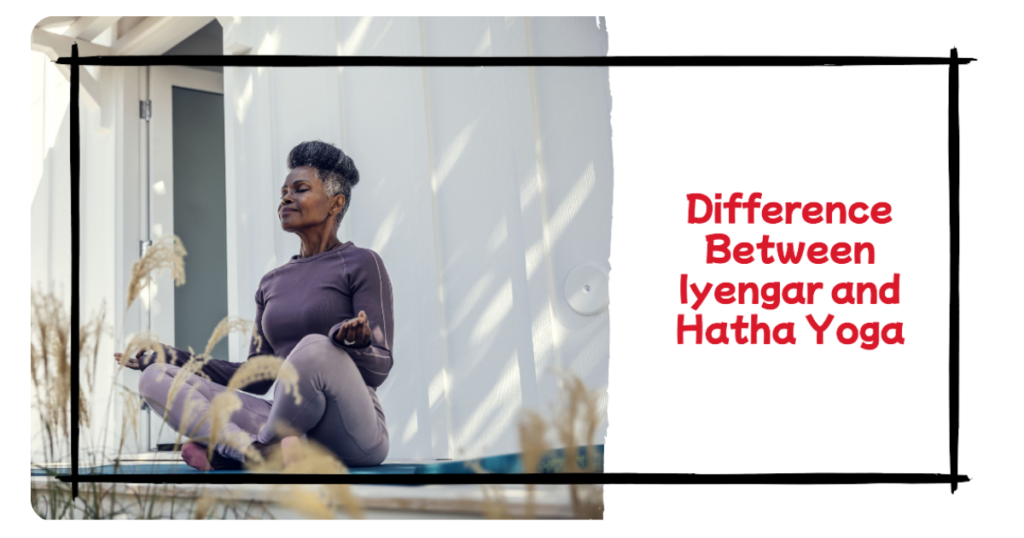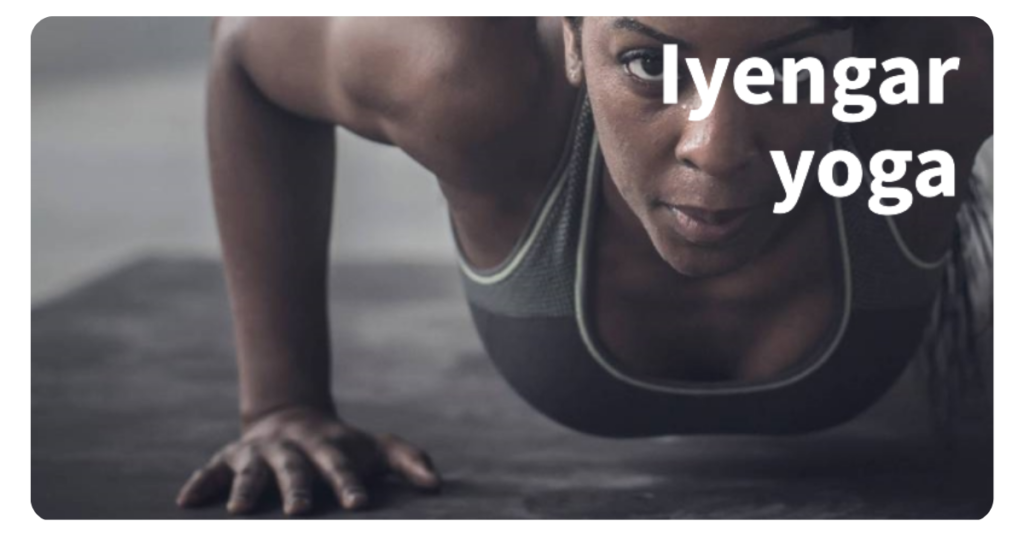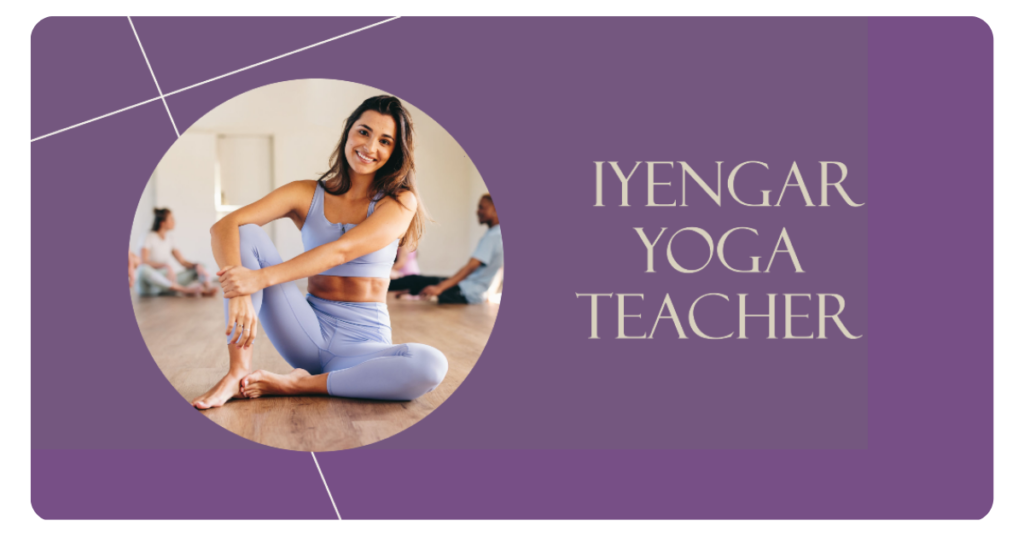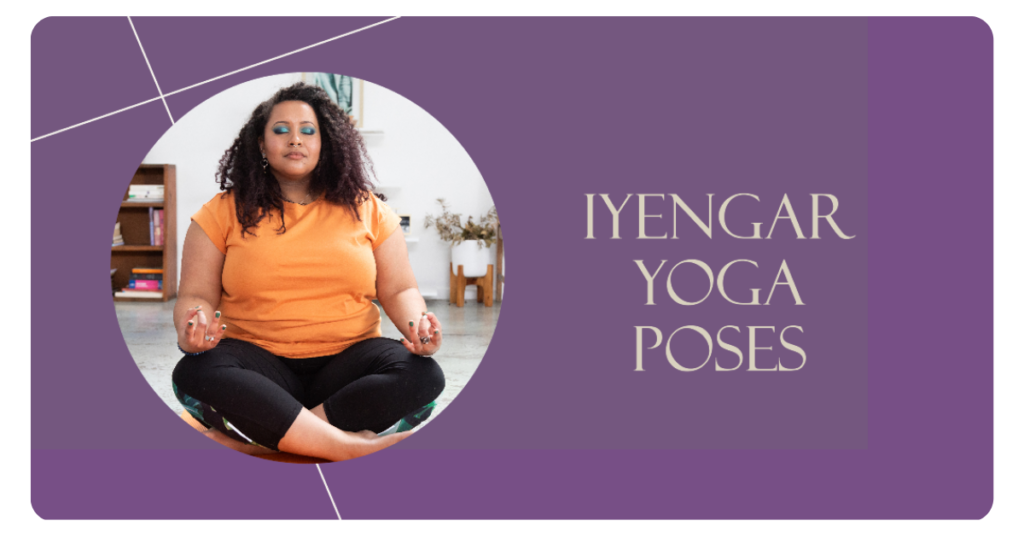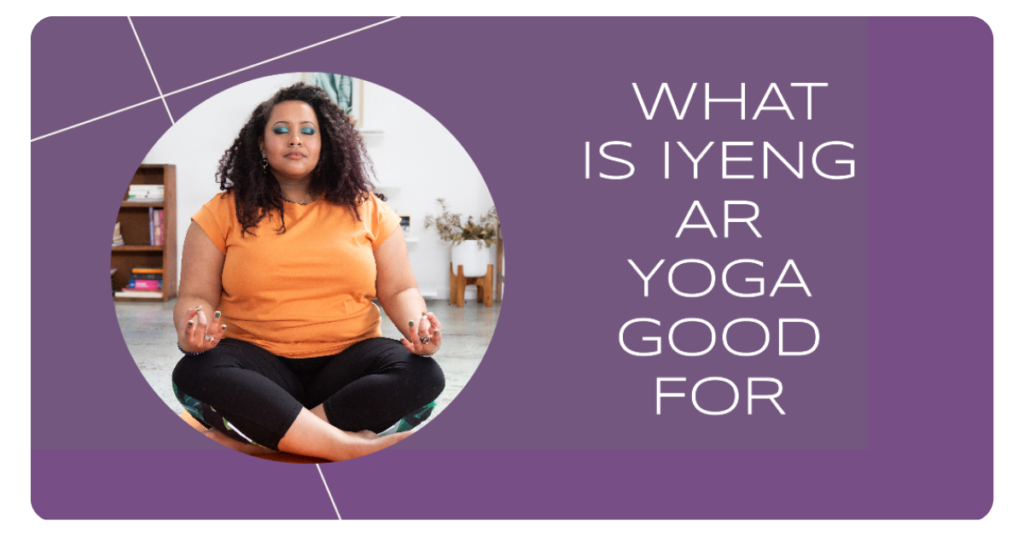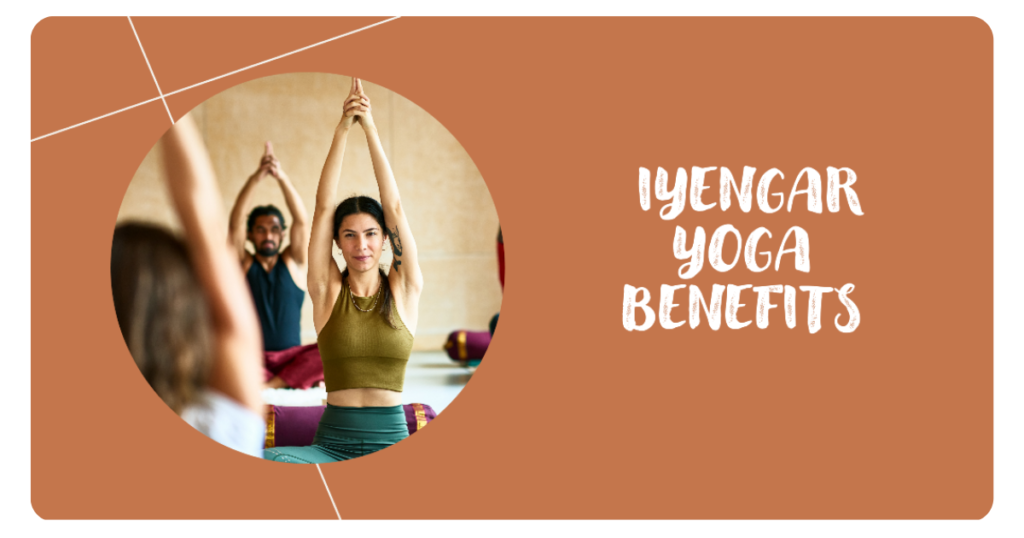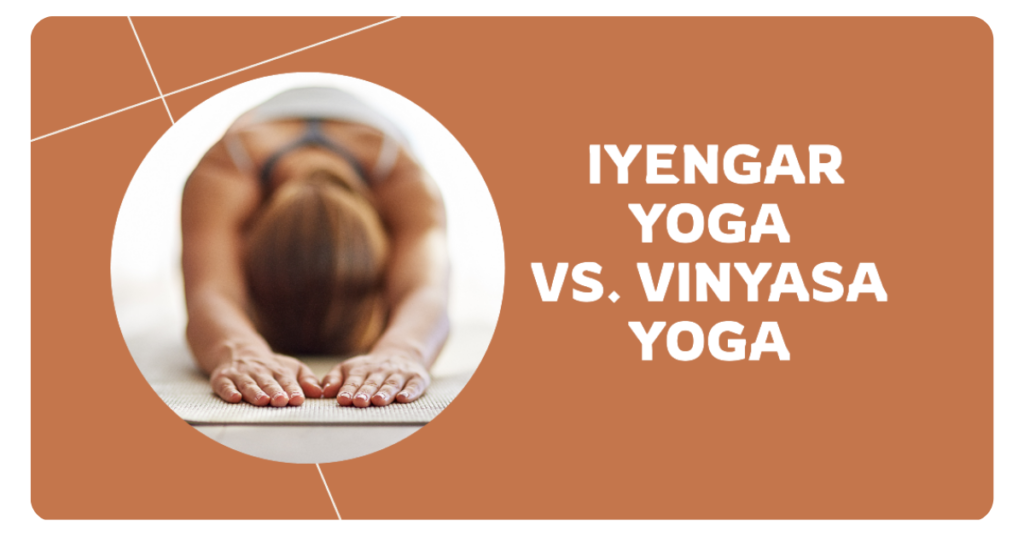
What is Iyengar Yoga?
Iyengar yoga is a form of hatha yoga developed by the legendary B.K.S. Iyengar. This style of yoga places a strong emphasis on precision, alignment, and the use of props to help students achieve proper form and access deeper levels of a pose. Iyengar Yoga vs Vinyasa Yoga
The key principles of Iyengar yoga include:
- Precise Alignment: Iyengar teachers provide meticulous, step-by-step instructions to help students align their body properly in each pose. This helps prevent injury and allows practitioners to fully experience the benefits of the asana.
- Systematic Sequencing: Iyengar classes follow a structured sequence of poses, starting with basic postures and gradually building up to more advanced asanas. This methodical approach allows students to gradually increase their flexibility and strength.
- Prop Utilization: Iyengar yoga makes extensive use of props such as blocks, straps, blankets, and chairs to help students modify poses and work within their current abilities. This allows even beginners to access challenging postures.
- Therapeutic Focus: Iyengar yoga is often recommended for those recovering from injuries or dealing with physical limitations. The focus on precision and the creative use of props makes it a highly therapeutic style of yoga.
In a typical Iyengar class, you can expect to hold poses for an extended period of time and receive detailed, hands-on adjustments from the teacher to help you refine your alignment. This methodical approach may appeal to students who value precision and are looking to develop a deeper understanding of the yoga asanas.
Iyengar yoga was developed by B.K.S. Iyengar, who is widely regarded as one of the most influential figures in modern yoga. Iyengar began his yoga journey at a young age, overcoming various health issues through dedicated practice. He went on to develop a unique approach that emphasized proper alignment, the use of props, and a systematic sequencing of poses.
One of the hallmarks of Iyengar yoga is its emphasis on precision and attention to detail. Iyengar teachers provide meticulous, step-by-step instructions to help students achieve the correct alignment in each pose. This attention to detail helps prevent injury and allows practitioners to fully experience the benefits of the asana.
Another key aspect of Iyengar yoga is the use of props. Iyengar believed that props such as blocks, straps, blankets, and chairs could be used to help students modify poses and work within their current abilities. This allows even beginners to access challenging postures and helps those with physical limitations or injuries to practice safely.
Iyengar yoga is also known for its therapeutic focus. Many people turn to Iyengar yoga to help with a wide range of health issues, from chronic pain and injuries to respiratory problems and neurological conditions. The precision and use of props in Iyengar yoga make it a highly effective tool for rehabilitation and the management of various physical and mental health conditions.
One of the key benefits of Iyengar yoga is its ability to improve alignment and body awareness. By focusing on proper form and technique, Iyengar yoga helps practitioners develop a deeper understanding of their body’s mechanics and how to move with greater efficiency and stability.
This attention to alignment can have a profound impact on overall physical and mental well-being. When the body is properly aligned, it can function more efficiently, reducing the risk of injury and promoting better posture, balance, and flexibility. Additionally, the focus on precise alignment can also have a calming effect on the mind, helping practitioners to stay present and focused during their practice. “Iyengar Yoga Benefits: Unlocking Mind-Body Transformation”
Table of Contents
What is Vinyasa Yoga?
Vinyasa yoga, also known as “flow yoga,” is a dynamic, energetic style of yoga that links breath and movement together in a continuous, fluid sequence of poses. Unlike the more static Iyengar yoga, Vinyasa classes are characterized by:
- Breath-Synchronized Movement: In Vinyasa, each movement is coordinated with an inhalation or exhalation, creating a seamless flow between poses.
- Rapid Transitions: Vinyasa classes typically move through a series of postures at a faster pace, with minimal time spent holding each asana.
- Creative Sequencing: Vinyasa teachers have more flexibility to design innovative, creative sequences that may include sun salutations, arm balances, inversions, and other advanced poses.
- Cardiovascular Benefits: The continuous movement and breath coordination in Vinyasa yoga provides a more vigorous, aerobic-style workout that can improve cardiovascular fitness.
- Mental Focus: The emphasis on linking breath and movement in Vinyasa encourages practitioners to stay present and mentally focused throughout the practice.
Vinyasa yoga classes often begin with a warm-up of sun salutations, then move through a dynamic sequence of standing poses, backbends, inversions, and balancing postures. The continuous flow and faster pace of Vinyasa may appeal to students looking for a more athletic, vigorous yoga practice.
The origins of Vinyasa yoga can be traced back to the Ashtanga Vinyasa system developed by the late Sri K. Pattabhi Jois. Ashtanga Vinyasa is a highly structured, physically demanding practice that links a set sequence of poses with the breath. While Vinyasa yoga is inspired by Ashtanga, it tends to be more fluid and less rigid in its approach, allowing for more creative variations and interpretations.
One of the key benefits of Vinyasa yoga is its ability to improve cardiovascular fitness and overall physical conditioning. The continuous flow of movement, coupled with the breath-synchronized transitions, can provide a challenging, high-intensity workout that gets the heart rate up and the body moving. This can be particularly appealing to students who are looking for a more dynamic and athletic yoga practice.
In addition to the physical benefits, Vinyasa yoga also emphasizes the importance of mental focus and presence. By linking the breath to each movement, practitioners are encouraged to stay fully engaged and mindful throughout the practice. This can have a calming effect on the mind, helping to reduce stress and promote a greater sense of overall well-being.
It’s important to note that while Vinyasa yoga is often associated with a faster pace and more advanced poses, it can still be adapted to suit practitioners of all levels. Many Vinyasa classes offer modifications and options for those who are newer to the practice or have physical limitations. The key is to find a teacher and a class that aligns with your current abilities and fitness goals.
Key Differences Between Iyengar Yoga vs Vinyasa Yoga
While both Iyengar yoga and Vinyasa yoga fall under the broader category of hatha yoga, there are several key differences between the two styles:
Pace and Flow
- Iyengar Yoga: Iyengar classes tend to move at a slower, more methodical pace, with a strong emphasis on holding poses for extended periods to refine alignment and technique.
- Vinyasa Yoga: Vinyasa classes are characterized by a faster, more continuous flow of movement, with minimal time spent holding individual poses.
Alignment Focus
- Iyengar Yoga: Iyengar yoga places a strong emphasis on precise alignment, with teachers providing detailed, step-by-step instructions to help students achieve proper form.
- Vinyasa Yoga: Vinyasa yoga focuses more on the coordination of breath and movement, with less explicit attention paid to perfect alignment in each pose.
Use of Props
- Iyengar Yoga: Iyengar yoga makes extensive use of props such as blocks, straps, and blankets to help students access and refine their poses.
- Vinyasa Yoga: Vinyasa classes typically use fewer props, relying more on the practitioner’s own body and breath to guide the flow of movement.
Therapeutic vs. Athletic Approach
- Iyengar Yoga: Iyengar yoga is often recommended for those dealing with injuries, limitations, or health conditions, as the focus on precise alignment and prop use can be highly therapeutic.
- Vinyasa Yoga: Vinyasa yoga is generally seen as a more athletic, vigorous style of yoga that can provide a challenging, cardiovascular-based workout.
Suitable for Different Levels
- Iyengar Yoga: Iyengar yoga can be suitable for practitioners of all levels, as the use of props and the methodical approach allow beginners to access more advanced poses.
- Vinyasa Yoga: Vinyasa yoga may be better suited for more experienced practitioners, as the faster pace and emphasis on linking breath and movement can be challenging for those new to yoga.
It’s important to note that these are general distinctions, and individual classes and teachers within each style may vary in their approach. Some Vinyasa classes may incorporate more alignment cues or use props, while some Iyengar classes may move at a slightly quicker pace. The key is to find the style and teacher that best suits your individual needs and preferences.
Choosing Between Iyengar Yoga and Vinyasa Yoga
When deciding between Iyengar yoga and Vinyasa yoga, there are several factors to consider:
Fitness Goals and Needs
- If you’re looking for a practice that emphasizes precise alignment, stability, and injury prevention, Iyengar yoga may be a better fit.
- If you’re seeking a more dynamic, cardiovascular-focused workout, Vinyasa yoga may be more appealing.
Current Skill Level and Physical Limitations
- Iyengar yoga may be a better choice for beginners or those with physical limitations, as the use of props and the methodical approach can make the practice more accessible.
- Vinyasa yoga may be better suited for experienced practitioners who are comfortable with a faster-paced, more physically demanding practice.
Preference for Pace and Approach
- If you prefer a slower, more methodical practice with a strong focus on alignment, Iyengar yoga may be more appealing.
- If you’re drawn to a more fluid, dynamic practice that links breath and movement, Vinyasa yoga may be a better fit.
Therapeutic vs. Athletic Needs
- If you’re looking to address a specific health condition or injury, Iyengar yoga’s therapeutic approach may be more beneficial.
- If you’re primarily interested in improving your cardiovascular fitness and overall physical conditioning, Vinyasa yoga may be the better choice.
Ultimately, the decision between Iyengar yoga and Vinyasa yoga comes down to your personal preferences, goals, and needs. Many yoga practitioners find value in exploring both styles, as each can offer unique benefits and complement the other.
It’s also worth noting that some studios and teachers may offer “Iyengar-influenced” or “Vinyasa-style” classes that blend elements of both approaches. These hybrid classes can be a great way to experience the best of both worlds and find a practice that truly resonates with you.
When choosing a yoga style, it’s important to remember that the most important factor is finding a teacher and a class that you feel comfortable and connected with. A skilled, experienced teacher can make all the difference in your yoga journey, regardless of the specific style they teach.
So, take the time to explore both Iyengar yoga and Vinyasa yoga, try out a few different classes and teachers, and trust your intuition to guide you towards the practice that will best support your physical, mental, and emotional well-being.
Conclusion
Iyengar yoga and Vinyasa yoga are two of the most popular and influential styles of yoga, each with its own unique approach and benefits. While Iyengar yoga emphasizes precise alignment, systematic sequencing, and the use of props, Vinyasa yoga focuses on the fluid coordination of breath and movement in a more dynamic, athletic practice.
Both styles of yoga offer valuable opportunities for physical, mental, and emotional growth, but the choice between them ultimately comes down to your individual needs, preferences, and goals. Consider factors such as your current skill level, physical limitations, fitness objectives, and personal inclinations to determine which style may be the best fit for you.
Regardless of which style you choose, the key is to approach your yoga practice with an open mind, a willingness to learn, and a deep respect for the transformative power of this ancient practice. By embracing the unique qualities of Iyengar yoga and Vinyasa yoga, you can embark on a journey of self-discovery and cultivate a lifelong love for the practice of yoga.
